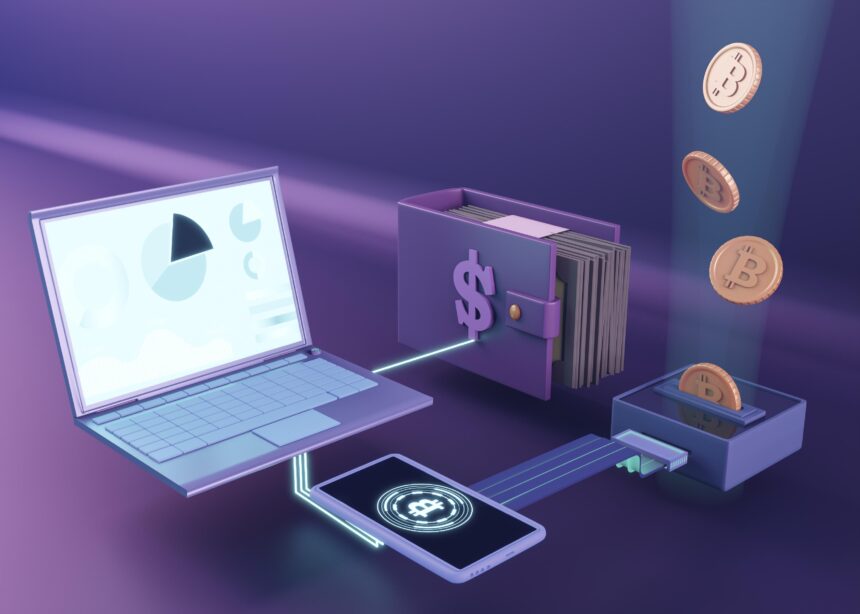Secure cryptocurrency storage starts with one decision—where your keys live—and continues with small, repeatable habits that block the most common attacks. In this practical guide, you’ll choose the right custody setup, harden devices, reduce phishing risk, and create a recovery plan that future-you can actually follow. The goal is simple: make secure cryptocurrency storage your default, not an afterthought.

Quick facts you can use today
- Keys = coins. If you control the private keys, you control the assets. Any plan for secure cryptocurrency storage begins with key custody.
- Phishing beats tech. Most losses begin with a bad click, fake support, or unlimited token approval. Habits stop these.
- Passkeys & MFA shrink risk. Phishing-resistant sign-in is the fastest upgrade to secure cryptocurrency storage for exchange accounts.
- Records matter. Clean notes, Tx links, and CSV exports make recoveries, audits, and taxes painless.
Step 1 — Pick your custody mix
For secure cryptocurrency storage, decide where keys live and why. Most people do best with a hybrid:
- Self-custody (hardware wallet): you hold keys; highest control; requires discipline.
- Custodial (exchange/app): provider holds keys; easier UX; rely on their security & policy.
- Hybrid: keep a lean trading balance on a reputable exchange and move savings to hardware.
Ask one question: “What amount would truly hurt if lost?” Put that amount into self-custody. Keep only working capital on an exchange.
Step 2 — Set up a hardware wallet correctly
Unbox offline. Generate the seed on the device screen. Write the seed by hand on paper or metal—never screenshots or cloud notes. Add a passphrase if supported and you can remember it reliably. Label this wallet “Savings.” A careful setup like this is the backbone of secure cryptocurrency storage.
Step 3 — Lock down exchanges with passkeys or strong MFA
On any exchange you keep using, enable phishing-resistant sign-in: passkeys or hardware security keys first, authenticator app second, SMS last. Turn on login, withdrawal, and new-device alerts. These controls are low effort and high impact for secure cryptocurrency storage when you must use custodians.
Step 4 — Split funds into hot, warm, and cold
- Hot: small, daily-use wallet for dApps; assume higher risk; keep balances lean.
- Warm: a second wallet for mid-term funds or routine DeFi activity.
- Cold: hardware wallet for long-term savings; connect rarely; test recovery with tiny amounts once.
Tag wallets in your notes so you always know which address is “play” and which is “savings.” Clear labeling protects secure cryptocurrency storage from rushed decisions.
Step 5 — Approvals hygiene (the DeFi trap)
Approving a token gives a smart contract permission to move it. That’s powerful—and risky.
- Prefer limited approvals over “unlimited” when the app allows it.
- Revoke old approvals monthly using a reputable revoker.
- Start with micro-transactions; confirm network, token, and slippage first.
These habits reduce the blast radius if a dApp is compromised and preserve secure cryptocurrency storage across apps.
Step 6 — Withdrawal allowlists & cool-off delays
On exchanges, turn on a withdrawal address allowlist and, if offered, a short withdrawal delay for new addresses. That extra friction blocks many phishing-led drains and strengthens secure cryptocurrency storage even when you use custodians.
Step 7 — Device basics you set once
- Keep OS and browser updated; enable full-disk encryption.
- Use a dedicated browser profile for crypto; install just the extensions you need.
- Block auto-opening of downloads; avoid running unsigned files.
- Add a DNS filter or reputable security extension to cut malicious domains.
These small steps dramatically lower attack surface and support secure cryptocurrency storage day to day.
Step 8 — Seed storage you’ll actually follow
Your seed phrase is the master key. Store two copies in separate locations—paper or steel. Never type a seed into a website or share it with “support.” If you must restore, do it through the hardware wallet’s official process. Simple rules like these keep secure cryptocurrency storage resilient against social engineering.
Step 9 — Multisig or smart-wallet safety (when the amount justifies it)
For larger holdings, add redundancy with multisig or a smart contract wallet that supports social recovery. Distribute signers across devices and places. Write a one-page recovery plan so you can execute under stress—planning is part of secure cryptocurrency storage, not a luxury.
Step 10 — Transaction checks that catch easy mistakes
- Verify the address on your hardware screen before confirming.
- Send a tiny test transaction to new addresses or bridges.
- Confirm the network and token contract; many losses are chain mix-ups, not exploits.
A 30-second check prevents hours of recovery work and keeps secure cryptocurrency storage intact.
Step 11 — Incident playbook (print this)
If you suspect compromise, act in this order:
- Move funds to a fresh, never-used hardware wallet you prepared earlier.
- Rotate exchange passwords and re-enroll passkeys/security keys.
- Revoke risky token approvals on active wallets.
- Document Tx links, timestamps, and what happened for support or law enforcement.
Having the steps written down is part of secure cryptocurrency storage. Stress is not the time to improvise.
Step 12 — Inheritance & continuity (don’t skip)
Create a short letter for your executor or beneficiary: where wallets live, where sealed seed backups are stored, and who to contact for help. Keep this separate from the seeds themselves. Review annually. A simple plan like this turns secure cryptocurrency storage into a family-proof system, not a single-person puzzle.

Your 15-minute monthly routine
- Confirm passkeys/MFA on exchanges; review withdrawal allowlists.
- Revoke stale approvals; update OS and browser.
- Snapshot balances; export CSVs and store Tx links.
- Glance at your inheritance note; update if needed.
This light routine keeps secure cryptocurrency storage healthy without turning it into a second job.
FAQs
What’s the simplest beginner setup? A reputable exchange for on/off-ramp with passkeys/MFA enabled, plus a hardware wallet for savings. Move profits to hardware weekly—small, steady habits define secure cryptocurrency storage.
Do I really need multisig? Only if the amount justifies extra complexity. If you use it, practice a mock recovery once so you’re confident.
How do I avoid phishing? Bookmark official URLs, never share seed phrases, ignore “support” DMs, and use allowlists. These basics drive most of the benefit in secure cryptocurrency storage.
Internal resources on Bulktrends
- Best Crypto Exchanges 2025: Fees, KYC & Proof-of-Reserves
- Stablecoins in 2025: USDT vs USDC vs EURC — Safety, Fees & Uses
- Crypto Taxes 2025: Simple Rules & Common Mistakes
- DeFi for Beginners (2025): Safe-Start Guide
- Ethereum 2025 Guide: Utility, Scaling & Staking
Authoritative external sources
- CISA — Multifactor Authentication
- NIST SP 800-63B — Authentication Guidelines
- FIDO Alliance — Passkeys overview
- CISA — Cybersecurity Best Practices
Final word
Secure cryptocurrency storage is a system, not a gadget: right custody, hardware for savings, phishing-resistant login, tidy approvals, and a tiny monthly routine. Set it up once, keep it light, and you’ll protect your coins without sacrificing convenience.
Educational content, not financial advice. Features and policies change; confirm on official pages before moving funds.






